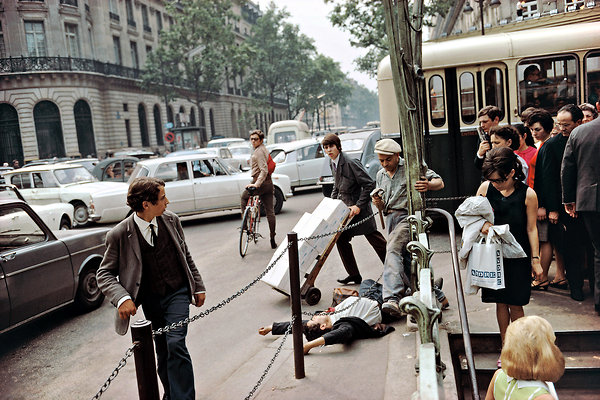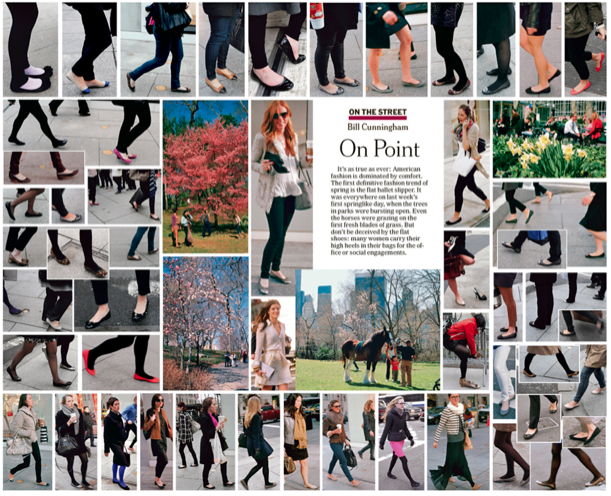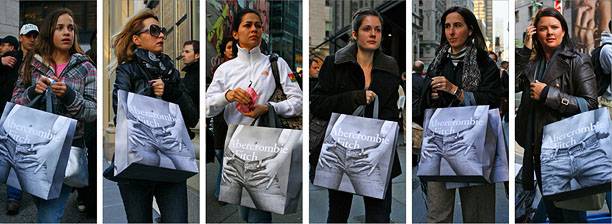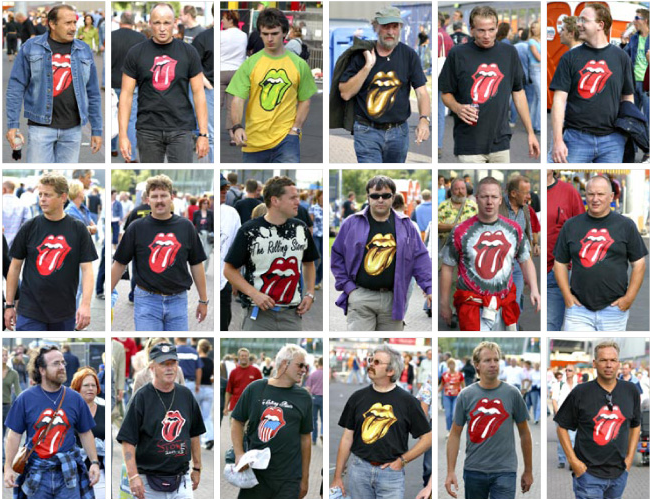‘People will do the same things, again and again, there’s a way that we all have of mimicking our responses to things so that we become socialised. Everybody stops at the corner, looks both ways, and then darts into the street.’
Joel Meyerowitz1
THE STREET PHOTOGRAPHER, AS opposed to a studio image-maker, engages with a working process that observes and captures events and arrangements of people, engaging with elements out of their sphere of control. New York-based photographer Joel Meyerowitz, inspired by Henri Cartier-Bresson, Robert Frank and Eugène Atget, describes the actions of street photography as outward looking and observant, ‘as if we were fishermen in the stream of Fifth Avenue’,2 in contrast to the studio image, for which the photographer directs their energy inward, and it is therefore an introspective practice. The same tension exists when observing the differences between fashion in street photography and the fashion image. The street photographer as a ‘collector’ is a key function in the artistic practices of Bill Cunningham and Hans Eijkelboom, both, although not strictly in fashion, diligently capture the repeated habits of the masses on the street.

Subversive to the fashion image, which is a highly composed, and orchestrated affair, the images of street fashion photography continue in the spirit of traditional street photographers. Fashion’s original street-style flâneur Bill Cunningham, whose work has spurred a contemporary generation of street fashion photographers, has granted the medium new attention and publicity on digital platforms and blogs (see Simon Swale’s article for the Vestoj blog ‘Fashion Blogs: It’s the World Around Us’).3 Cunningham, immortalised in the documentary ‘Bill Cunningham New York’,4 has a particular way of working that is immediately distinctive in his longstanding New York Times style column. Through diligent observation and documentation of the repetition of outfits, fashion mannerisms and trends, Cunningham formulates his popular feature to highlight emerging patterns of behaviour in the way people dress.

Although not necessarily defined to the realm of mainstream fashion, Dutch photographer Hans Eijkelboom’s carefully constructed grids of people on the street function in almost the same way as Cunningham’s work, but sit in an art context. Coming from a conceptual art background, Eijkelboom’s body of work is based on observation, interrogation and documentation of the social tendencies of individuals and groups. In one such early work, the photographer asked strangers on the street to point out someone who they deemed to be ‘beautiful’ and someone who they thought was ‘ugly’, Eijkelboom then documented their responses compiling the series ‘Mooi – Lelijk (Beautiful – Ugly)’ in 1980. From 1992 to 2007 Eijkelboom worked on his epic project ‘Photo Notes’ for which he took between one and eighty images every day between these years of people on the street, collecting a mass of images of people and their repeated gestures, clothes and adornment. Eijkelboom explains that, ‘Only in their combinations and repetitions, […] do the photographs make visible moments that have possibly played a part in the development of my world view.’5 Like Cunningham, Eijkelboom6 has been working in his process of serial image-taking for much of his career, his images seek out sartorial motifs in order to highlight their symbolic power in our culture, but in doing so he is documenting and archiving culture within a timeframe.


The cinematic alignment of bodies and gestures to create a surreal, ‘decisive moment’ is a concept that traditionally drives a street photographer, building on the notion of the street as a stage, and Walter Benjamin’s concept of the ‘flâneur’, a wanderer and observer of the life on the streets. Here is the point of departure for Cunningham and Eijkelboom, who both look for commonalities in repetition, to create a story or communicate a message about how we appear in mass, and in doing so, offer a cultural mirror. Working within quite different contexts, individually the work of these two photographers is read quite differently – Cunningham the fashion columnist and Eijkelboom in an art context, however both photographers have fundamental similarities in the functions of their practice.
‘Joel Meyerowitz: What you put in the frame determines the photograph’, http://www.youtube.com/watch?v=Xumo7_JUeMo ↩
‘Joel Meyerowitz: Street Photography’, http://www.youtube.com/watch?v=J2DMUcnD7qU, 1981 ↩
Simon Swale, ‘The World Around Us’, https://vestoj.com/current/?p=1195. ↩
Richard Press, ‘Bill Cunningham New York’, 2010. ↩
Hans Eijkelboom, ‘Diary 8-11-1992 – 8-11-2007’, http://www.photonotebooks.com/PDF/Diary-ENG.pdf ↩
Dieter Roelstraete, ‘The Mass Ornament — Revisited: Hans Eijkelboom’s Photo Notes’, published on afterfall.com. ↩